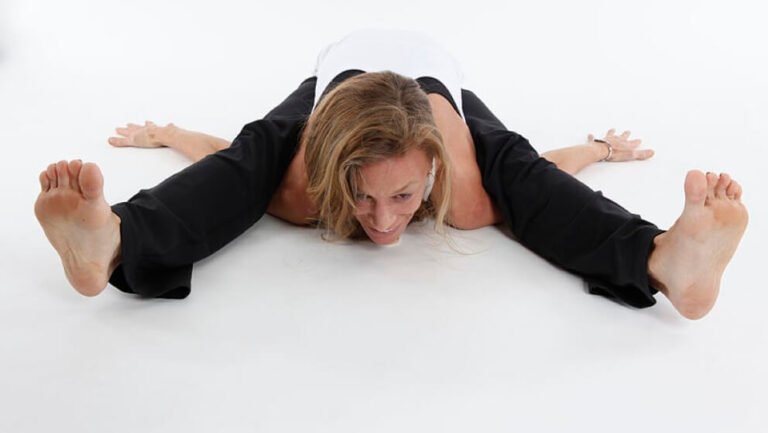https://www.ekhartyoga.com/articles/ashtanga-yoga-the-primary-and-intermediate-series – Jenny Savage
We take a closer look at the Primary and Intermediate series of Ashtanga Yoga. What are they and when can we progress through the series?
Six series
Ashtanga Vinyasa Yoga is made up of six series (Primary, Intermediate and four Advanced Series) each of which has a set order of poses.
Each of the six series begins with Surya Namaskara (Sun Salutations) 5 of the A variation and 5 of the B variation, followed by the standing sequence. All the series end with the same finishing sequence. It is only the middle section which has a different group of asanas and focus depending on the series. Traditionally the poses are always practiced in a specific order and are taught in a Mysore style with the teacher giving the practitioner a new pose when they feel they are ready. Find out more about Mysore-style sessions at the Yoga Space.
The Ashtanga Primary Series
The Ashtanga Primary Series is called Yoga Chikitsa, meaning yoga therapy, because of the cleansing and toning effect it has on both body and mind. On a physical level the asanas (poses) of the Primary Series build strength and flexibility in the body, loosening tight muscles and realigning and detoxifying the body and nervous system. The series begins with forward bends, then twists and hip openers with a vinyasa between each asana.
On a mental level, through regular practice focus, willpower, mind-body awareness and confidence are improved as we overcome the mental obstacles to our practice. On a subtle level the Primary series works therapeutically to clear obstacles in the energy channels in the body (known as Nadis).
This clearing of obstacles allows the Prana to flow more freely so the body and mind are therefore allowed to work more effectively.
The Ashtanga Intermediate Series
The Ashtanga Intermediate Series is known as Nadi Shodana – meaning Nerve Cleansing. This is because of the focus on backbend asanas. The backbends encourage and maintain the suppleness of the spine and as well as working on opening the energy channels allowing Prana to flow freely.
While some of the earlier asanas in the sequence may be familiar to many (Locust Pose for example) the sequence moves onto more intense backbends, hip opening poses and headstand variations.
The poses have their own health benefits and challenges but the specific combination of the poses works strongly on the nervous system, so it can have a very different effect on the body than the Primary series or other dynamic yoga classes. It’s therefore really important to end your practice with a long Savasana and as you start out practicing the Intermediate series begin on a day when you don’t have too much going on.
So how can you know when it is time to move on to the Intermediate Series?
The Primary series itself is challenging and practitioners may stay with the Primary series for several years before starting to bring in poses from the Intermediate series. Traditionally the Ashtanga Yoga student would be told by their teacher when they are ready to move onto the next series. However, if you are not practicing under the guidance of a teacher how do you know when you can move on?
Ashtanga Yoga teacher David Swenson says that it is not a question of “mastering” the Primary Series before moving on to the Intermediate Series. It is not a question of being able to do every pose to its full expression, rather the knowledge of how to approach the poses. There should always be room for learning more within the practice, otherwise we shut ourselves off from the possibility of growth. David’s guidance therefore is to be able to practice the Primary Series without stopping and without needing to refer to external resources like a book or video before entering the Intermediate Series.
Whether you are practicing Ashtanga for the first time or are working through the Intermediate Series remember to practice with awareness and patience always returning to the breath.
“Asanas are not the goal. They are a vehicle to access a deeper internal awareness” David Swenson

